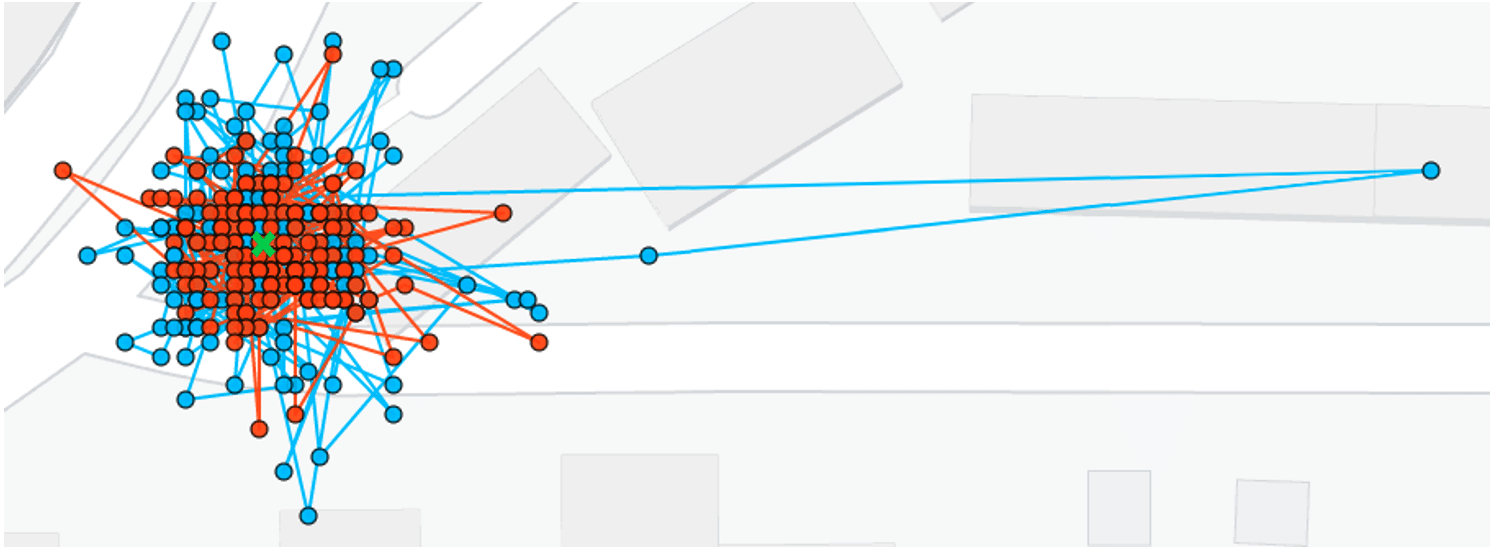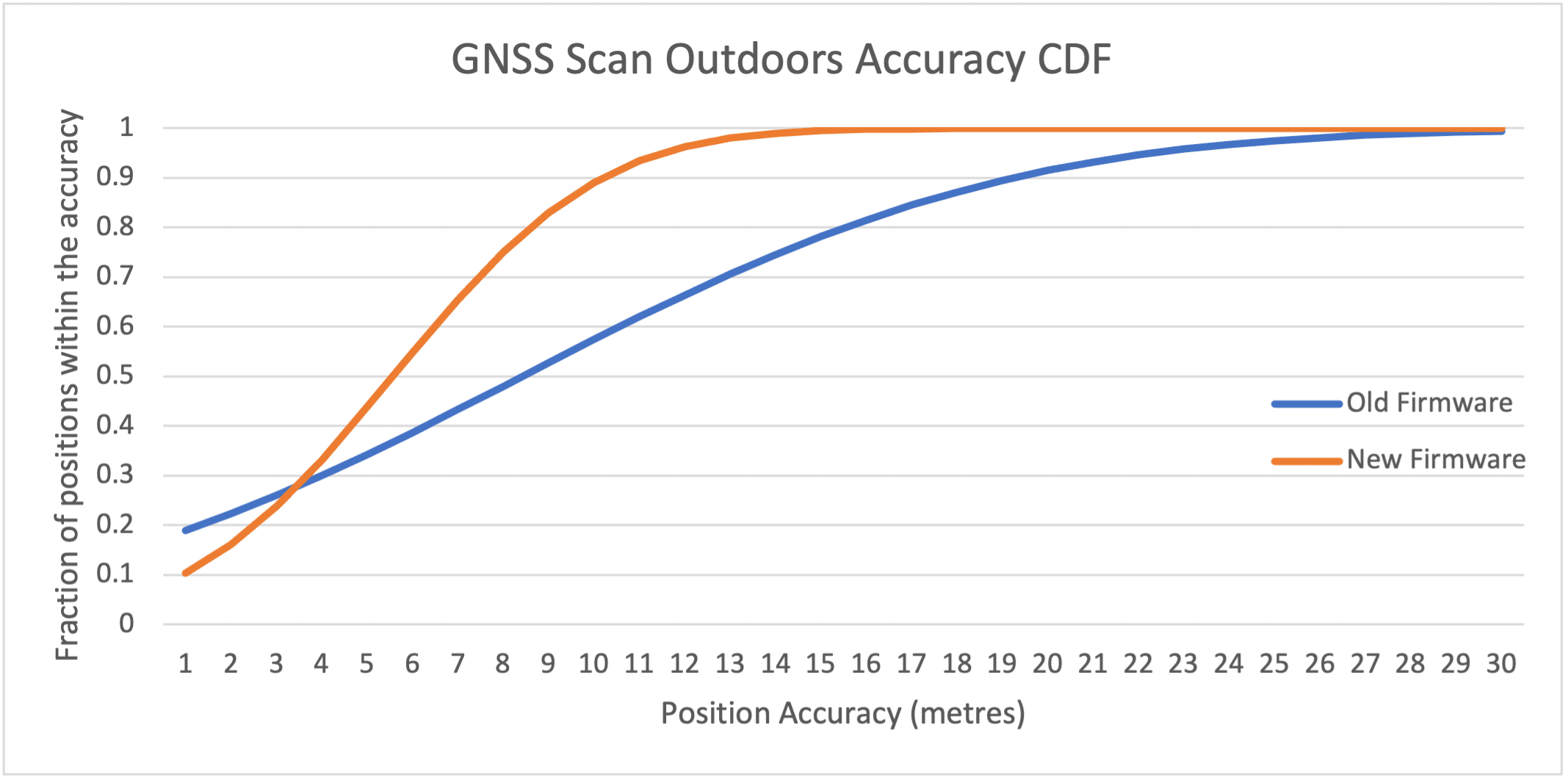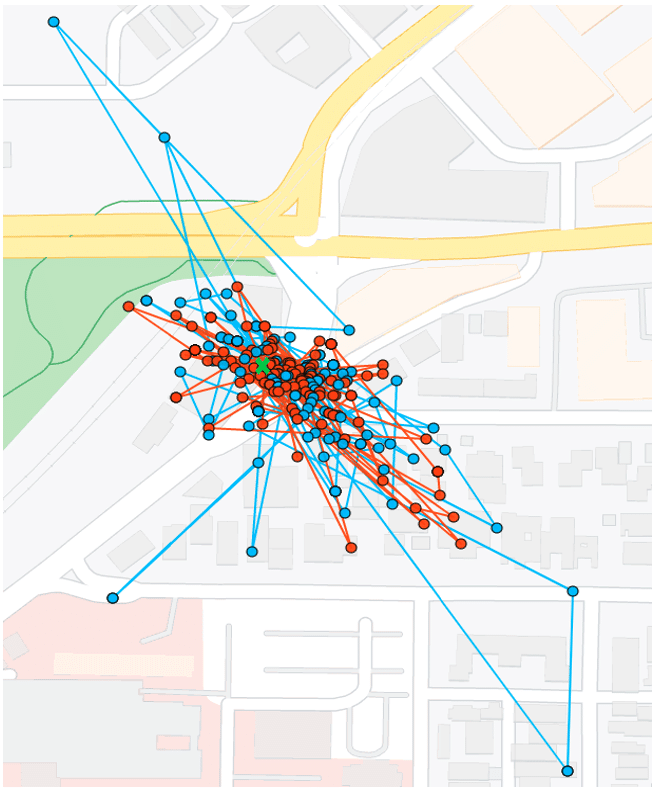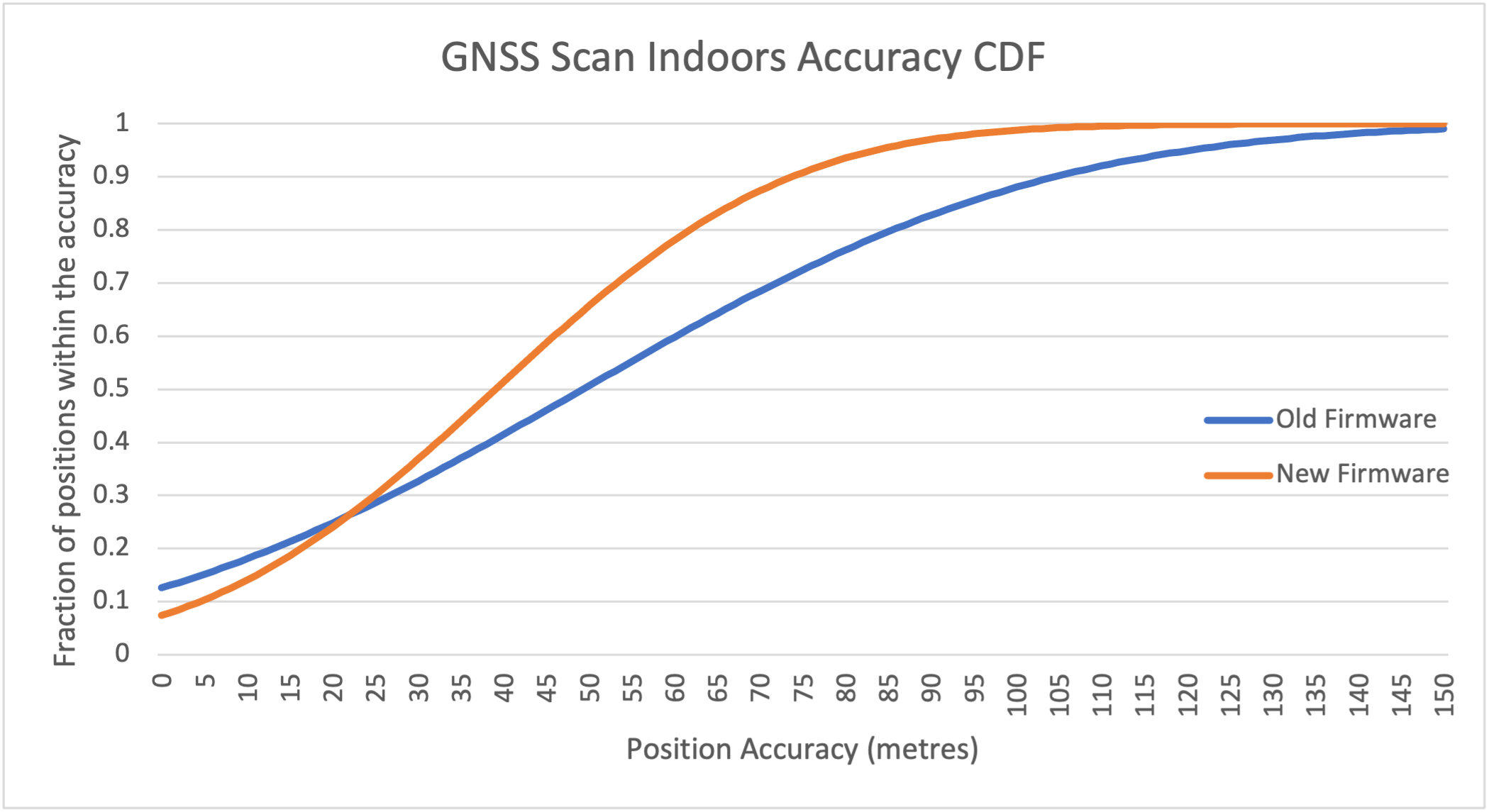GNSS Performance and Accuracy Improvements on Yabby Edge Cellular

Our mission is to help businesses connect, protect, and derive more value from their assets. As a leading global innovator, developer, and supplier of IoT solutions, we drive continuous innovation to enable our partners to deploy confidently at scale worldwide.

We’re excited to report GNSS performance and accuracy improvements on the Yabby Edge Cellular (LTE-M/NB-IoT) with our latest firmware update!
Performance and Accuracy Improvements
The Yabby Edge battery-powered asset tracking device utilizes the Semtech LR1110 Integrated Circuit to scan for GNSS satellites and Wi-Fi access points for ultra-low-power Indoor/Outdoor asset tracking. Featuring low-power GNSS scanning, the Yabby Edge takes a brief snapshot of the current satellites in view and sends that information to the server (Location Engine), for the server to then calculate the position.
This greatly reduces the power consumption in comparison to a traditional GNSS device that leaves the receiver on while it calculates the position on the module itself. However, this comes at the cost of performance since traditional devices can continue calculating a position until they deem the uncertainty as acceptable.
Our new firmware update narrows this performance gap by doing an additional burst of five quick, targeted scans if it found satellites in its initial scan. This only marginally increases the power usage of a GNSS scan, while increasing the reliability and accuracy of the server-side position calculation.
Real-World Results
Figure 1 is an overlay of 300 scans performed by two Yabby Edges, one with the old firmware (blue), and one with the new firmware (orange). It is visually evident that the new firmware increases the accuracy and reduces the likelihood of outliers.

Figure 1: Outdoors comparison of old (blue) and new (orange) firmware in an urban area
An analysis of the data shows that the old firmware had an average accuracy of 9m, and a standard deviation of 9m, while the new firmware had an average accuracy of 6m and a standard deviation of 4m.
Figure 2 is a CDF graph of the 300 outdoor positions further showcasing the improved accuracy of the new firmware. The graph shows that 95% of the positions were within 23m of the actual position for the old firmware, and within just 11m for the new firmware.

Figure 2: CDF of position accuracies outdoors in an urban area
Figure 3 is a comparison of the firmware versions in one of the most difficult environments for GNSS – a narrow window in an urban area. The results have been filtered to only accept positions with uncertainties reported by the server of 80 metres or less, and approximately 20% of all lookups did not meet this threshold for both firmware versions.
It is visually evident that both sets of results have been skewed by the narrow sky view, with the newer firmware having fewer outliers.

Figure 3: Comparison of old (blue) and new (orange) firmware in a narrow window
An analysis of the data shows that the old firmware had an average accuracy of 49m, and a standard deviation of 43m, while the new firmware had an average accuracy of 39m and a standard deviation of 27m.
Figure 4 is a CDF graph of the 300 indoor positions further showcasing the improved accuracy of the new firmware. The graph shows that 95% of the positions were within 120m of the actual position for the old firmware, and within just 80m for the new firmware.

Figure 4: CDF of position accuracies in a narrow window
The latest firmware (v1.15) can be updated over the air as a 240kB download. Contact us today for more information on the Yabby Edge Cellular, or get in touch with your Digital Matter local support team for assistance updating your firmware.
Related News

Let’s Get Started
Submit the form to get in touch with a Digital Matter representative from your region.
Contact UsSubscribe
Get helpful content delivered straight to your inbox.
Let’s Get Started
Submit the form below to get in touch with a Digital Matter representative from your region.

Looking for support? Check out our knowledge base.

Information on becoming a Digital Matter Partner.

Information on pricing, availability, and proof of concept.

Guidance on selecting the right products for your application.






